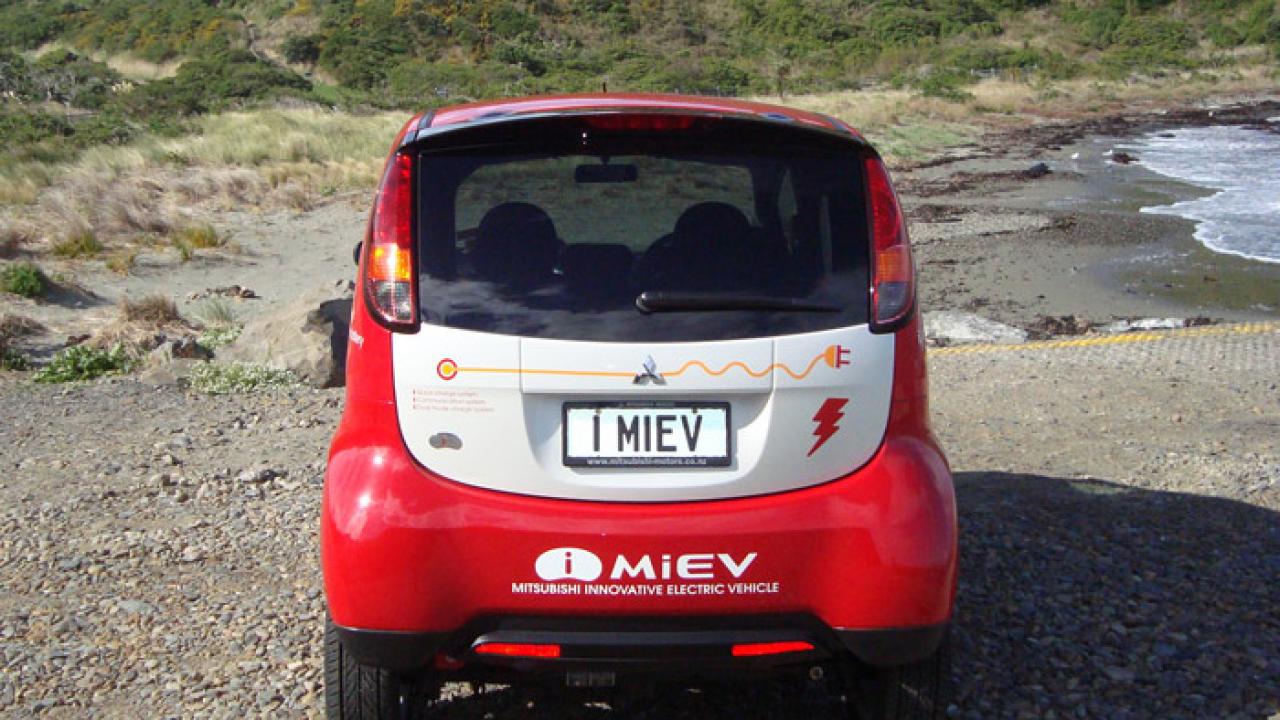New car report: An i-car with extra spark
When we got the phone call from Mitsubishi to ask if we wanted to drive their electric car, the iMiEV, we didn't need to be asked twice. And the experience was such that if we are asked a second time, we'll be there in a flash!
No longer a futuristic dream, but soon to go into production, offering equal power but almost twice the torque of its petrol equivalent, the i-car, the Mitsubishi iMiEV (i-car Mitsubishi innovative Electric Vehicle) is a product of joint research by Mitsubishi Motors and Japanese electric power companies.
Mitsubishi Motors New Zealand have secured a test vehicle, making New Zealand one of only three global markets, USA and the UK being the other two, to get their hands on a fully working engineering prototype.
The iMiEV is powered by a rear mounted electric motor, positioned in place of the 3 cylinder petrol engine usually found in the i-car. Power output is limited to 47kW, the same as the turbo-charged 660cc i-car, but the real treat is a boost in torque from 94Nm up to is an impressive 180Nm.
The iMiEV is a lively performer reaching 80km/h 1.5 seconds quicker than the petrol powered i-car.
The 330V Lithium-ion battery pack is mounted low in the car, where you would normally find the fuel tank. The battery pack is made up of 22 modules, each containing four 3.75V cells. In the event that one cell should fail, a diagnostic tool can detect which cell is faulty, and that cell can be replaced individually.
The iMiEV is fitted with two charging sockets. One which has a cable that simply plugs into a conventional mains power socket at home, and the other for a commercial fast charger. The home charger takes 7 hours to charge the 330V pack from dead flat and the fast charger takes just thirty minutes.
During fast charging, air is ducted across the battery pack via the vehicle's air-conditioning system to keep the pack cool. The air-conditioning compressor is driven by an electric motor which is incorporated with its own converter for high voltage.
The remainder of the vehicle's electrical system is controlled by a conventional 12V battery. The heater operates in a similar way to a conventional heater, but with the liquid circulated by a 12V water pump.
Starting the car is a simple matter of turning on the key to power-up the electrical system.
There's no starter motor to crank, so once the system is alive there is no difference to driving any conventional car. Drop the gear selector into drive, release the brake and you're away. Except that the iMiEV delivers awesome torque right from the get-go and delivers a driving experience par excellence.
The silent operation is a sensation you soon get used to, and the punchy power delivery right across the range is a delight. Mitsubishi have gone to great lengths to ensure the driving experience is similar to any conventional vehicle, and have over-achieved in their objective.
With a 180kg increase in weight and a low centre of gravity due to the positioning of the battery pack, the iMiEV has a solid feel on the road, and handling is exceptional. Keeping up with, or passing traffic at motorway speeds is effortless.
There are three modes to the drive system, Drive, Economy and Brake. The Drive mode offers optimum performance, while the Economy mode reduces power and energy consumption. The Brake mode reverts to optimum power but has a strong regeneration brake force for steep downhill runs.
Range is 160km between charges, which is fine for city running, given that the average New Zealand motorist does 14,000km per year, or 38km per day. In the event that you do exceed the 160km, the vehicle still has a limp home mode, although top speed is only 30km.
Production begins in July 2009, with 2,000 units scheduled for this year. Orders are stacking up already in Japan, with 20,000 units pre-ordered, mainly for power companies and the like.
Mitsubishi tell us that New Zealand won't be far behind, with production for our market planned for 2010. No pricing is available yet.




